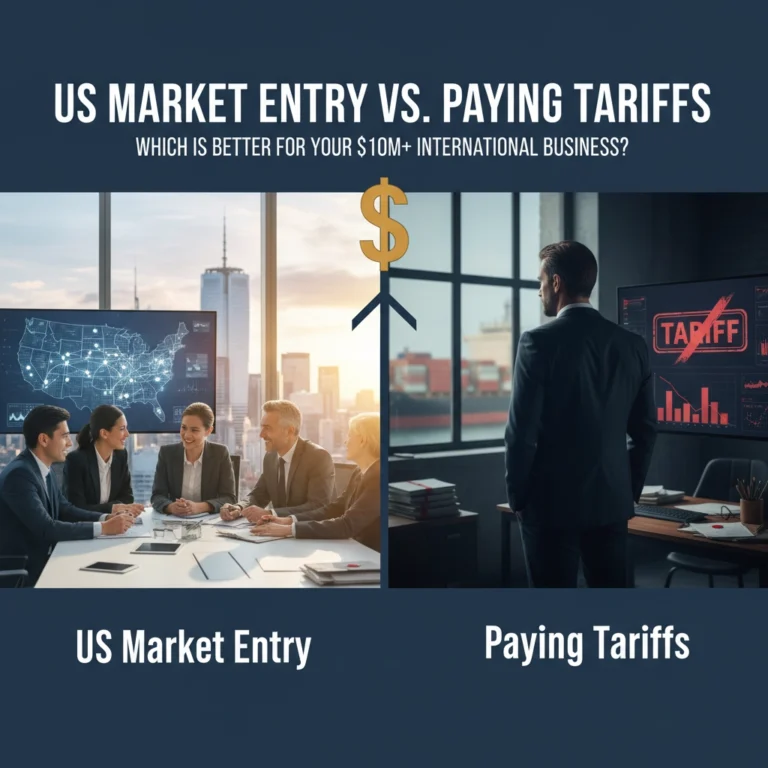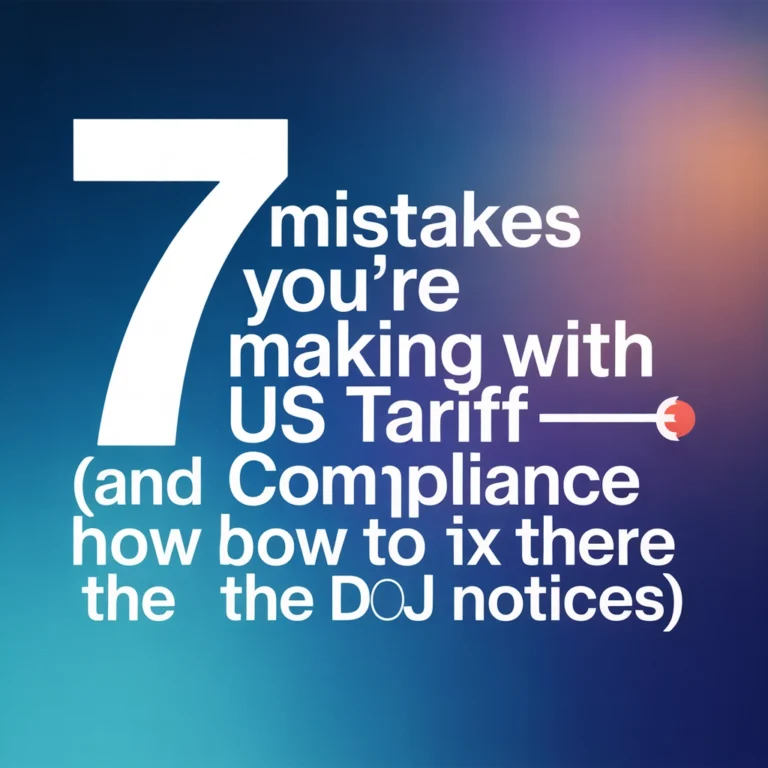From Idea to Impact: How International Businesses Are Winning Big with Lean U.S. Market Entry Strategies

The Lean Revolution in U.S. Market Entry
Gone are the days of launching into the U.S. with huge budgets and rigid plans. The modern playbook for international businesses is lean, agile, and laser-focused on learning directly from U.S. customers—fast. Lean market entry means putting assumptions to the test and letting the market guide your next move, all while keeping risks (and costs) low.
This approach borrows from the famous lean startup methodology: hypotheses, rapid experiments, customer feedback, and non-stop iteration. Instead of betting big all at once, more international companies are building agile market entry strategies—testing, learning, tweaking, and only scaling what works.
Why the Lean Approach Works for the U.S.
The U.S. market is massive, diverse, and brutally competitive. Traditional strategies—big up-front investments, long periods of planning, and slow rollouts—just don’t cut it anymore. U.S. consumers are tech-savvy, quick to judge, and bombarded with options.
Lean market entry flips the script:
- Speed: Test ideas quickly instead of waiting for perfect plans.
- Efficiency: Spend only what you need to validate assumptions.
- Flexibility: Pivot fast when you see what works (and what doesn’t).
- Customer focus: Let real buyer feedback shape your offering.
Digital-First Entry: The Lean Testing Ground
Digital strategies are the golden ticket for lean entry. Why? Because digital channels help you reach vast U.S. audiences, collect a mountain of data, and tweak your approach without heavy investment in people or property.
E-commerce platforms, social media, digital ads, and online marketplaces (like Amazon and Walmart Marketplace) are letting international brands "set up shop" in the U.S. overnight. These digital-first moves remove the risk and delay of building a physical presence from day one.

By using these channels, you can:
- Launch MVPs (Minimum Viable Products) to test demand.
- Try different price points and messaging.
- Gauge customer sentiment via reviews and feedback loops.
- Experiment with fulfillment models (direct shipping vs. local partners).
Proven Lean Entry Models
1. Exporting: The Classic, Lean Way In
Exporting gives ambitious brands access to the U.S. with minimal commitment. Over 98% of U.S. companies that sell internationally use this strategy—and it works both ways for companies coming into the U.S.
Why exporting hits the lean sweet spot:
- Low upfront risk: No need for local incorporation or hiring.
- Scalability: Ramp up as demand grows.
- Quick learning: Use initial sales volumes, returns, and customer questions to sharpen your value proposition.
How to Get Even Leaner:
- Start with a limited product range.
- Target niche segments first instead of going broad.
- Use third-party logistics or U.S. warehousing partners to test local fulfillment with minimal operational overhead.
2. Licensing & Franchising: Scalable, Speedy, and Lean
Not ready to go it alone? Licensing and franchising let you piggyback on local expertise and infrastructure.
- Licensing means letting U.S. partners use your IP, branding, or technology in exchange for royalties. You validate your model while your partner does the heavy lifting.
- Franchising lets you replicate proven business models through operators who understand the local market.
Just remember: selecting the right partners is crucial. Quality control and brand reputation matter more than ever, so invest in partner vetting and ongoing support.
3. E-Commerce & Marketplaces: Digital Sandboxes
Direct-to-consumer e-commerce has become the ultimate lean entry move. Platforms like Shopify, Amazon, and even TikTok Shop mean you don’t have to break the bank on marketing or distribution—from day one, your brand is in front of millions of Americans.

Bonus points: E-commerce offers unparalleled data. Within weeks you’ll know which SKUs, prices, and ad messages truly click with your U.S. audience. Use these insights to double down on what’s working—or pivot away from what’s not.
Validation > Research: Building on Real-World Evidence
In the old days, exhaustive market research was king. Today, nothing beats the power of real-life validation:
- Launch an MVP: Not sure if your health snack will beat U.S. taste buds? Launch a small batch digitally and collect sales and feedback.
- Experiment, iterate, repeat: Update your messaging, tweak your product, or try a new distribution channel until the numbers show you’ve nailed it.
Lean is all about testing assumptions in the market—not just in a boardroom.
Balancing Standardization with Local Adaptation
The U.S. is a huge market, but it’s not a monolith. Lean entry forces companies to figure out: what should stay the same and what should change? Successful brands protect the essence of what makes them different (think: Swiss chocolate quality, Korean skincare tech), but adapt packaging, flavors, or messaging for U.S. consumers.

Pro tip: Your first batch of U.S. customers will often be your best feedback machine. Use their input to make changes and move fast—flexibility is your best friend.
Lean Entry in Action: A Hypothetical Success Path
Let’s see what this actually looks like in the wild. Imagine a European fitness tech startup eyeing the U.S.:
-
Step 1: Market Recon/Exporting
- Launches smartwatches on Amazon and a Shopify store.
- Runs paid ads, gathers sales/channel data.
- Gets early feedback: American buyers want bigger screens and better integration with U.S. fitness apps.
-
Step 2: Digital-First Experimentation
- Updates landing pages for U.S. consumer language.
- Runs a promotional campaign for New York and California.
- Adapts packaging and instructions for the U.S. market.
-
Step 3: Iterate and Learn
- Uses metrics from month one to tweak the offer.
- Develops U.S.-specific features based on support tickets.
-
Step 4: Scale with Partners
- Begins discussions with local distributors or licensing the tech to U.S. sports retailers.
- Explores a pop-up retail partnership for hands-on experience.
Every decision is data-driven and customer-centric, keeping risk low and learning high at every stage.
Resource Allocation: Scale Your Investment as You Learn
Lean entry doesn’t mean no resource commitment—just smarter allocation. Invest where you see results, and pull back from blind spots. Here’s how the savviest brands do it:
- Stage resources: Start small, scale fast once you have proof.
- Automate: Use digital tools for marketing, analytics, and fulfillment.
- Outsource: Rely on experienced partners for compliance, legal, and logistics.
This dynamic approach ensures your budget follows your results—not the other way around.
Why U.S. Lean Entry Builds Future-Ready Companies
Winning in the U.S. market is about more than just making a splash. Lean startups and agile established multinationals alike are learning that the process of iterative, validation-driven entry builds resilience and adaptability for every market they tackle next. Each experiment in America pays off with new capabilities and deeper insight—skills that can be exported worldwide.
Ready to Launch Lean? Take the First Step
Ready to take your business to the next level? 🚀 Don’t just dream—it’s time to make it happen with USLaunch! Book your free strategy call, and let’s kickstart your success together: Book a call with us!
Share this with a friend who’s ready to grow—and let’s go viral together!







